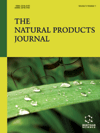
Full text loading...
We use cookies to track usage and preferences.I Understand

Research has been carried out regarding the benefits and influence of saffron and its derivatives on skin health. Crocin from Crocus sativus L., Gardenia jasminoides, and Nyctanthes arbor-tristis, and safranal from Crocus sativus L. might alleviate skin aging effects. This literature review discusses the mechanism of crocin and safranal as anti-inflammatory agents in reversing oxidative stress and improving aging effects on the skin. Based on the literature review, crocin and safranal have strong antioxidant capacity. The mechanism that allows crocin to reduce oxidative stress is by directly neutralizing reactive oxygen species in human dermal fibroblasts and modifying keratinocyte O-linked glycobiology in human keratinocytes. Crocin also increases skin thickness and protects against blue light stress; its derivative, crocetin, could act like melatonin. Meanwhile, safranal also has a potential mechanism for alleviating skin aging in the form of nanoparticles (liposome and solid nanoparticles) or pure safranal through inhibiting dermal enzymes that are involved in the process of skin aging, such as elastase, collagenase, and hyaluronidase.

Article metrics loading...

Full text loading...
References


Data & Media loading...